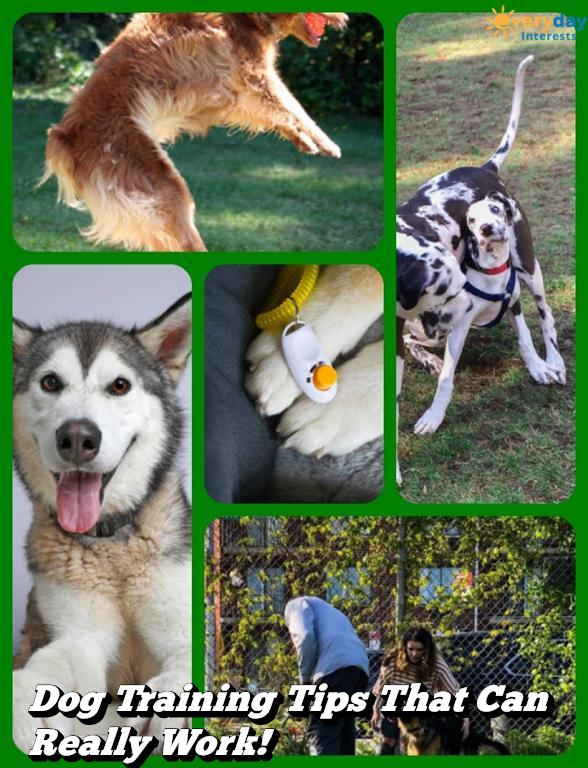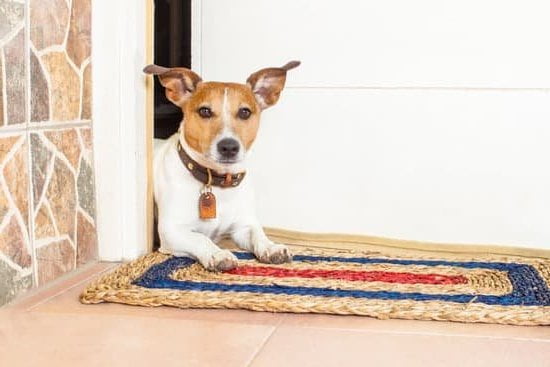Potty training is a critical aspect of owning a dog, as it sets the foundation for a harmonious living environment. Whether you have a new puppy or an older rescue, teaching them appropriate bathroom behavior is essential for their well-being and your sanity. In this article, we will explore the significance of potty training, highlighting its benefits for both the dog and the owner.
Successful potty training not only ensures that your furry friend knows where to do their business but also establishes a strong bond between you and your dog. By effectively guiding them to eliminate outside or in designated areas, you can create a clean and hygienic living space. Additionally, proper potty training helps prevent accidents in the house, reducing stress and potential damage to your home.
Moreover, potty training provides numerous benefits for your canine companion. It gives them a sense of routine and structure, promoting overall obedience and behavioral stability. When dogs learn where and when to relieve themselves, they feel secure within their established boundaries. This understanding also leads to increased confidence and an improved quality of life for both pets and owners.
By recognizing the importance of potty training from the very beginning, dog owners can set realistic expectations and take proactive steps towards successful training. In the following sections, we will discuss various factors that influence potty-training progress, key indicators of readiness for training, effective strategies to implement during the process, common challenges encountered along the way, tips for success, frequently asked questions, and more. So let’s dive deeper into this essential aspect of dog ownership – potty training.
Factors that Influence Potty Training Progress
Age
Age is an important factor that can significantly influence a dog’s ability to grasp potty training concepts. Puppies have a smaller bladder capacity and shorter attention span compared to adult dogs, which can make the potty training process more challenging. Generally, puppies around 8-16 weeks old may need to relieve themselves every 1-2 hours. As they grow older, their bladder control improves, allowing them to hold it in for longer periods.
It is essential to understand that each dog is unique and may progress at their own pace when it comes to potty training. Some puppies may catch on quickly and fully grasp the concept within a few weeks, while others may take several months before achieving consistency. Patience and understanding are crucial during this stage, as accidents are normal and should be expected.
Breed
Different dog breeds may have varying timelines for potty training due to factors such as size, temperament, and physical abilities. Smaller breed dogs tend to have smaller bladders and may require more frequent potty breaks compared to larger breeds. Additionally, certain breeds known for their intelligence and trainability may pick up potty training cues faster than others.
It is also worth noting that some breeds are naturally clean and prefer not to eliminate in their living areas. These dogs may be easier to potty train as they naturally seek out appropriate spots. On the other hand, breeds with stubborn or independent tendencies might require additional time and effort during the potty training process.
Individual Differences
Each dog has its personality and temperament, which can impact their progress in potty training. Some dogs are eager to please their owners and will quickly learn where they should eliminate, while others may be more strong-willed or easily distracted. Understanding your dog’s individual traits can help you tailor your approach to meet their specific needs during the potty training process.
Additionally, the previous experiences and background of a dog can influence their potty training progress. For example, rescue dogs or those with a history of living in unsanitary conditions may require more time and patience to adapt to appropriate elimination behaviors. Consistency, positive reinforcement, and understanding your dog’s unique needs are key to successfully navigating individual differences during potty training.
Key Indicators of Readiness for Potty Training
Signs to Look out for
- frequent sniffing or circling a specific area
- sudden restlessness or pacing
- going to the door or signaling to go outside
- whimpering, scratching, or barking when needing to go
Before starting the potty training process, it is important to look for signs that indicate a dog is ready. These signs may vary among dogs but understanding them can help set a solid foundation for successful training. Some common signs include frequent sniffing or circling a specific area, sudden restlessness or pacing, going to the door or signaling to go outside, and whimpering, scratching, or barking when needing to go.
Physical and Emotional Readiness
It’s essential to ensure that your dog is physically and emotionally ready for potty training. Physically speaking, puppies under 12 weeks have limited bladder control and may struggle with holding their pee for an extended period. An older dog may have better bladder control but might require additional patience during the training process.
Emotionally, a dog needs to be able to understand and follow simple commands before they can effectively learn potty training cues. They should also be comfortable with their surroundings and not easily frightened or anxious. If a dog seems fearful or stressed during potty training attempts, it may be necessary to address any underlying issues before proceeding further.
The Importance of Consistency and Patience
Potty training requires consistency and patience from the owner. Dogs thrive on routine, so establishing a consistent schedule for potty breaks is crucial. Take your dog outside at regular intervals throughout the day and praise them when they eliminate in the appropriate spot.
It’s important to remember that accidents are normal and part of the learning process. Reacting with anger or frustration can create fear or confusion in your dog, hindering their progress. Instead, clean up accidents calmly and redirect your focus on reinforcing positive behaviors.
Patience is key during the potty training process. Each dog learns at their own pace, so it’s essential to remain patient and consistent in your efforts. It may take days or weeks before a dog fully grasps the concept, but with perseverance, they will eventually become potty trained.
The Potty Training Process
The process of potty training a dog can be a challenging but rewarding journey. This section will provide a step-by-step guide on how to initiate and implement potty training with your furry friend, highlighting the significance of establishing a regular schedule for potty breaks and introducing positive reinforcement techniques for successful training.
When starting the potty training process, it is important to establish a designated area where your dog will be encouraged to relieve themselves. This can be a specific spot in your yard or an indoor area with appropriate materials, such as puppy pads or a litter box. Consistency is key during this stage, so ensure that you always bring your dog to this designated area when they show signs that they need to eliminate.
Establishing a regular schedule for potty breaks is crucial for successful training. Puppies typically need to eliminate shortly after eating, playing, or waking up from naps. Taking your dog outside or bringing them to their designated indoor area at these times will increase the likelihood of them doing their business in the appropriate spot. It is also important to take them out first thing in the morning and right before bed.
Positive reinforcement is an effective technique in potty training. When your dog successfully eliminates in the appropriate spot, immediately praise them and offer a small treat or verbal reward. This positive association will help reinforce good behaviors and encourage your dog to continue using the designated area for elimination.
| Stage | Timeline |
|---|---|
| Initiation | The first few days of bringing your dog home |
| Establishing Routine | 1-2 weeks |
| Consistency and Reinforcement | Ongoing throughout the training process |
| Mastery | 3-6 months, depending on the individual dog |
Remember, potty training is a gradual process that requires patience and consistency. Some dogs may pick up on it quickly, while others may take longer to fully grasp the concept. It is important to be prepared for accidents and setbacks along the way. Stay committed to your training routine and never punish or scold your dog for accidents. With time, practice, and reinforcement, your furry friend will eventually become fully potty trained.
Common Challenges Encountered in Potty Training
Potty training a dog can sometimes be a challenging process, and many dog owners encounter difficulties along the way. Understanding these common challenges and how to overcome them can help make the potty training journey smoother. Here are some of the most frequent challenges that dog owners face during potty training:
- Accidents: Accidents are bound to happen during the potty training process, especially in the early stages. It’s important not to get discouraged or frustrated when accidents occur, as this is a normal part of the learning process for dogs. To prevent accidents, it’s crucial to provide frequent opportunities for your dog to go outside or use their designated potty area.
- Setbacks: It’s not uncommon for dogs to experience setbacks in their potty training progress. Changes in routine, new environments, or even stress can all contribute to setbacks. The key is to remain patient and consistent with your training efforts. Going back to basics and re-establishing a routine can often help overcome these setbacks.
- Resistance: Some dogs may exhibit resistance or reluctance when it comes to potty training. This could be due to fear, anxiety, or simply not understanding what is expected of them. In these cases, it’s important to stay calm and avoid punishment or negative reinforcement. Instead, focus on positive reinforcement techniques such as rewards and praise when they display desired behavior.
To address these challenges effectively, here are some strategies that can be helpful during potty training:
- Supervise your dog closely: Keep a close eye on your dog at all times during the potty training process. This will allow you to catch any signs that they need to go outside before accidents happen.
- Establish a consistent routine: Dogs thrive on routine and predictability. Establishing a regular schedule for feeding, playtime, and bathroom breaks can help reinforce good habits and make the potty training process easier.
- Use positive reinforcement: Rewarding your dog for good behavior is a powerful tool in potty training. Praising and providing treats or toys when they eliminate in the appropriate area can help reinforce the desired behavior.
By understanding these common challenges and utilizing effective strategies, you can overcome them and achieve success in potty training your furry friend. Remember that each dog is unique, and it’s important to tailor your approach to their individual needs and temperament. With patience, consistency, and positive reinforcement, you can navigate through the challenges of potty training and celebrate success with your dog.
| Common Challenges | Solutions |
|---|---|
| Accidents | Provide frequent opportunities for bathroom breaks; remain patient |
| Setbacks | Go back to basics, re-establish a routine, stay consistent |
| Resistance | Avoid punishment, focus on positive reinforcement techniques like rewards and praise |
When to Expect Results
Explaining realistic timelines for achieving potty training success
Potty training is a process that requires time, consistency, and patience. It is essential to have realistic expectations when it comes to the timeline for achieving successful potty training with your dog. While every dog is different, there are general milestones you can expect during the potty training journey.
In the early stages of potty training, it is normal for dogs to have accidents and take some time to understand where they should eliminate. It is important not to get discouraged or frustrated during this phase. On average, it takes about 4-6 months for a puppy or newly adopted dog to be fully potty trained. However, this timeline can vary depending on factors such as age, breed, and individual differences.
Highlighting different milestones and accomplishments during the potty training process
During the potty training process, there are several key milestones that indicate progress and improvement. These milestones may vary from dog to dog but here are some common ones:
- Understanding Basic Commands: Dogs who have grasped basic commands like “sit,” “stay,” and “come” tend to have an easier time with potty training. This shows that they are capable of learning and following instructions.
- Consistency in Going Outside: A significant milestone in potty training is when your dog consistently goes outside to eliminate rather than having accidents indoors. This demonstrates that they are starting to understand the concept of where they should go.
- Signs of Distress: Dogs will often give subtle cues when they need to go outside such as sniffing around or pawing at the door. Recognizing these signs shows that your dog is becoming more aware of their bodily needs.
Emphasizing the importance of continued reinforcement and practice even after initial success
Once your dog has achieved initial success in potty training, it is crucial to continue reinforcing good habits. This means maintaining a consistent schedule for potty breaks, providing positive reinforcement when your dog eliminates outside, and not becoming complacent with their progress.
It is important to remember that accidents may still happen even after achieving milestones in potty training. Dogs can regress or have setbacks due to changes in routine, stress, or illness. Patience and persistence are key during these instances. By consistently practicing good habits and reinforcing positive behaviors, you can help ensure long-term success in potty training your dog.
By having realistic expectations and understanding the milestones involved in the potty training process, you will be better prepared for the challenges and successes that come along the way. Remember to celebrate each milestone achieved by your furry friend as you both work towards a harmonious living environment.
Tips for Successful Potty Training
The Importance of Consistency
Consistency is key when it comes to successful potty training for dogs. Dogs thrive on routine, and establishing a consistent schedule for potty breaks can greatly aid in the training process.
Designate specific times throughout the day when your dog should have access to their designated potty area, such as first thing in the morning, after meals, and before bedtime. By consistently bringing your dog to their designated spot during these times, you are reinforcing the idea that this is where they should eliminate.
Additionally, consistency extends beyond just timing. It’s important to use consistent cues and commands during potty training. Choose a specific word or phrase that you will use every time you take your dog outside to do their business. This will help them associate that cue with going potty and make it easier for them to understand what you expect from them.
Positive Reinforcement
Positive reinforcement is a powerful tool when it comes to potty training your dog. Instead of punishing your dog for accidents or mistakes, focus on rewarding them for good behavior. When your dog successfully goes potty in their designated area, immediately praise them with enthusiasm and give them a treat or verbal reward. The goal is to make going potty in the right place a positive and rewarding experience for your dog.
It’s important to note that punishment or scolding after accidents can be counterproductive and confusing for your furry friend. Dogs may not understand why they are being punished if there is any delay between the accident and the punishment. This can result in anxiety or fear around elimination, making it more difficult to properly train them.
Persistence and Patience
Potty training takes time, patience, and perseverance. Every dog learns at their own pace, so it’s important to be patient throughout the process. Accidents will happen along the way – it’s part of the learning process. Instead of becoming frustrated, take these accidents as opportunities to reassess your training methods and make any necessary adjustments.
Remember that consistency and repetition are key during potty training. Don’t give up if progress seems slow or if setbacks occur. Stay committed to the training routine and continue to reinforce positive behavior. With time, patience, and a positive attitude, you will see progress and ultimately achieve success in potty training your furry friend.
By following these tips for successful potty training, you can create a solid foundation for your dog’s understanding of where they should eliminate. Remember that each dog is unique, so it’s important to tailor your approach based on their specific needs and personality. With consistency, positive reinforcement, persistence, and patience, you’ll be well on your way to developing a harmonious living environment with your potty-trained pup.
Frequently Asked Questions about Potty Training
Potty training can be a challenging task for dog owners, and it is common to have questions about the process. In this section, we will address some of the frequently asked questions about potty training dogs and provide expert advice to help troubleshoot any issues that may arise.
- How long does it take to potty train a dog?
- What should I do if my dog has accidents indoors?
- My dog seems resistant to potty training. What should I do?
- Are there any products or aids that can assist with potty training?
The timeline for potty training can vary depending on several factors, including the dog’s age, breed, and individual temperament. Generally, it takes anywhere from a few weeks to a few months for dogs to become fully potty trained. Consistency is key during this process, and it is important to remain patient and persistent.
Accidents are a common part of the potty training journey, especially in the early stages. If your dog has an accident indoors, it is essential not to punish or scold them as this can create fear and anxiety around potty training. Instead, calmly clean up the mess using an enzymatic cleaner to remove any lingering scent that may attract your dog back to that spot. Focus on reinforcing positive behaviors and continue with consistent training.
Some dogs may be more stubborn or resistant when it comes to potty training. If your dog is showing resistance, it is crucial to evaluate your current training methods and make necessary adjustments. Ensure that you are providing consistent guidance and rewards for desired behaviors. Additionally, consult with a professional dog trainer or behaviorist who can provide personalized advice based on your specific situation.
There are several products available in the market that can aid in potty training efforts. Pee pads or indoor grass mats can be useful for dogs who are being trained exclusively indoors or those who have limited access to outdoor spaces. Additionally, doggie doorbells or training sprays can help establish a connection between going outside and pottying.
Remember, every dog is unique, and what works for one may not work for another. It is essential to adapt your approach based on your dog’s individual needs and preferences.
In the next section, we will provide additional resources and recommendations for further reading and assistance with potty training your furry friend.
Conclusion
In conclusion, potty training is an essential aspect of living harmoniously with dogs. It not only benefits the owner by creating a clean and sanitary living environment, but it also greatly improves the dog’s overall well-being and quality of life.
Throughout this article, we have explored the various factors that can influence a dog’s potty training progress, as well as key indicators of readiness for training. We have also provided a step-by-step guide for the potty training process, addressed common challenges and setbacks, and offered practical tips and advice for success.
It is important to remember that potty training takes time and patience. Every dog is unique, and their progress may vary depending on age, breed, and individual differences. However, with consistent effort and positive reinforcement techniques, success can be achieved.
As you embark on your potty training journey with your furry friend, remember to celebrate each milestone along the way. Whether it’s your dog understanding where they should relieve themselves or going an entire day accident-free, every achievement deserves recognition. By acknowledging these successes, you will feel encouraged to continue working towards complete potty training success.
Lastly, don’t be discouraged by setbacks or accidents that may occur during the process. It is natural for dogs to make mistakes while learning new habits. Instead of dwelling on these moments, focus on reinforcing positive behaviors and redirecting your dog’s attention to appropriate areas for bathroom breaks.
In closing, embrace the potty training journey with open arms and a positive mindset. By following the steps outlined in this article and staying consistent in your efforts, you will soon celebrate the success of a fully potty trained furry friend who brings joy and peace into your home.
Frequently Asked Questions
Do all dogs eventually get potty trained?
Yes, all dogs can eventually be potty trained with consistent training and patience from their owners. However, the time it takes for each dog to become fully potty trained may vary depending on factors such as breed, age, and individual personality.
It is important to understand that the process of potty training requires a commitment from the owner to provide proper guidance and reinforcement.
What dog breeds are hardest to potty train?
While every dog is unique and trainable, some breeds are known to be more challenging when it comes to potty training. For example, small dog breeds such as Chihuahuas and Dachshunds can sometimes be harder to train due to their stubbornness or small bladder sizes.
Additionally, some sight hound breeds like Afghan Hounds or Basenjis are known for being more independent and may require extra effort in terms of housebreaking. However, it is crucial to remember that breed alone does not determine trainability, and individual dogs within these breeds can still successfully be potty trained with the right techniques.
Is 4 months too late to potty train a dog?
Four months is not too late to start potty training a dog. While it is generally easier to begin the process when the dog is younger (around 8-12 weeks old), older puppies can still learn how to properly eliminate outside or in designated areas indoors. Consistency and patience are key regardless of the dog’s age.
It may take a bit longer for an older puppy or adult dog to grasp the concept initially, but they can still make progress through positive reinforcement techniques like rewards and consistency in scheduling bathroom breaks. Understanding and adapting to the needs of an older pup will help create a successful potty training experience at any stage of their development.

Welcome to the blog! I am a professional dog trainer and have been working with dogs for many years. In this blog, I will be discussing various topics related to dog training, including tips, tricks, and advice. I hope you find this information helpful and informative. Thanks for reading!





